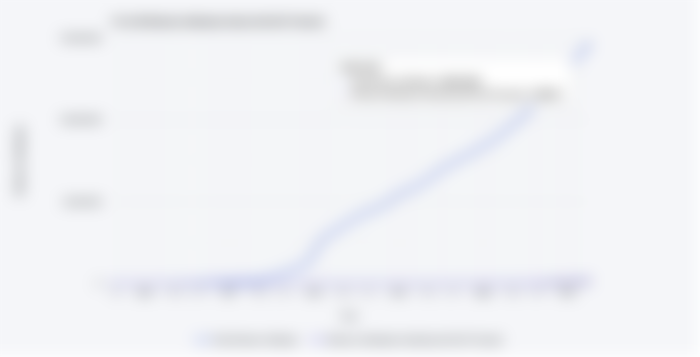The craze of NFT has brought excitement to the Internet again.

You can hardly read about NFT on the Internet. NFTs represent the provable ownership of scarce digital art, and they are taking the world by storm. Celebrities are casting their own NFTs, friends are promoting their projects around, and new platforms are announced every day. Some of my friends had no interest in encryption technology, but now they ask me: "Hey, what do you think of NFT?" They have never asked DeFi once. Why is it easier for ordinary users to enter the world of NFT than DeFi?
These are my thoughts.
First of all, what is traditional finance?
We ordinary people have no idea, and we owe a lot of traditional debts.
John Oliver called Bitcoin and cryptocurrency: "Everything you don't understand about money is combined with everything you don't understand about computers." But we all appreciate art. NFT art provides a lot of things-artists can monetize their works, big crypto players reward new artists to join the field, and create new forms of art itself. Beeple's $69 million marketing gimmick proves that NFT is squeezing the traditional art field. The most recent is Tom Brady's Autograph, a platform designed to host digital collections in the fields of sports, entertainment, fashion and popular culture.
Andreas Freund's words came to mind, "Although DeFi is very exciting, many of his use cases are restricted under the regulatory framework and are not suitable for the rapid and large-scale application of blockchain." Freund said in his rich article The foresight article predicts that the brand economy will become a catalyst for peripheral users to join the blockchain field. He is not far away. Tools like Collab.Land can easily emerge tokenized communities, which are more similar to subreddits and IRC networks, which are deeply niche. In contrast, you can see them on Facebook or Twitter.
NFT provides an easy entry point, even if transaction fees are high. For the wider society, DeFi is still too complicated. The whole world is watching the competition between the army of retail investors and the traditional financial market. However, most of us are watching and insisting on holding our own cryptocurrency while cheering for people. Artistic NFTs are more attractive than DeFi for many reasons, including the simple fact that ease of use is always more important than how novel financial products are.
Only about one percent of Ethereum addresses have interacted with the DeFi protocol

The number of Ethereum addresses interacting with the DeFi protocol is from the agreement of Dune Analytics.
NFT brings miracles and excitement back to the Internet
I went looking to buy my first NFT. I don't know where to start. I went to Twitter and logged in to @gmoney.eth's post. He explained why he bought a CryptoPunk for 140ETH. For Gmoney, adding the outstanding Crypto Punk to his collection is equivalent to adding Rolex to the real-world watch collection. what is interesting is. A few minutes later, I witnessed a transaction on FlamingoDAO-they paid $176,000 (140 ETH) for a super rare Crypto Punk. In a way, it brought weird things back to the Internet. However, as far as I know, there is nothing weird about yield farming.
When browsing NFT, I can't help feeling that the Internet is more like a home. For those of us who grew up on the Internet, in forums and IRC, we miss the wild, weird, ASCII, and nonsensical nature of the Internet. Those online worlds that we and our brothers and sisters compete to enter. For a long time, the environment as we know it has long ceased to exist. From the moment we can put our mobile phone in our pocket, advertising is everywhere. Social media sites sell our attention to the highest bidder, and influencers sell us almost irrelevant products. The good things are gone forever. In recent years, I have lost my love for the Internet, which is why I joined ConsenSys to try to revive the p2p network experience. I wandered around the subreddits in my pocket and tried to read books to calm the pain.
However, the craze of NFT has brought the Internet back into excitement. Someone sold a white png for about 5ETH. WWE launched Undertaker NFT. It's like all childhood silly things mixed with current popular culture and coinage on the blockchain. I joined a tokenized community where about 2000 members talked about art, fashion, music, MEME and culture. I found a comment that dates back to mid-December 2020. A musician expressed his desire for a music-based NFT platform. Someone replied: "I am trying to do something unique to you." The same account later posted: "Catalog is under test. Check it out." In March. Catalog is a platform for collecting, trading and listening to real works based on the Zora protocol. The artist can get 100% of the income at the first sale, and at the same time, a certain percentage of the fee will be set in the early stage, which will be obtained every time it is sold. The Zora agreement was established in May 2020, establishing a universal and permanent media market in ERC-721. I saw in real time the results of the hard work and unremitting iterations invested in the Ethereum field over the years.
It's just riveting enough.
A paradise for crypto marketers
The dream of crypto marketers is being realized. Ethereum-based applications call domain expertise outside of the encryption field to create fashionable applications while focusing on a wide range of pro-civil use cases. We have been praying for the arrival of this day, which can promote exquisite products with the blockchain running in the background. Even if the current global search for NFTs is weakening, there is still a huge opportunity to extend NFTs beyond those who are proficient in encryption. The art industry is currently the focus of NFT, but other industries are also expected to follow. The game industry is born to create a perfect environment for the next wave of NFT. Gaming can become one of the most important markets and has already accounted for the largest share of NFT sales.
I read that NFT is used to tokenize commercial assets into verifiable invoices and orders. I have thought about how people like me can invest in NFT funds to own land in Decentraland instead of owning land in real life.

I read about the authenticity verification problem and how Serto's search tool plans to solve this problem. Platforms like Foundation and Zora are a simple sale, and a friend can get started quickly without reading 15 white papers. I read countless articles, tweets, and verbal abuse surrounding the NFT environment. The handheld NFT Studio came into being and launched a 99% energy-saving NFT side chain.
User experience-first platform
I listened to a podcast, the protagonist is Lindsay Howard, the community leader of Foundation. She shared how she has more than ten years of art planning experience, which undoubtedly brings a unique perspective to the application of Foundation.
Foundation is a highly curated NFT art platform that selects artists through a prudent invitation system.
Foundation feels like a digital version of a New York gallery, which is also designed. NFT shopping on Foundation is like going to a 200-year-old family-run Italian handmade gourmet snack shop. In contrast, browsing art works on OpenSea feels like searching for gold in a large American supermarket. Everything goes so fast. I want to find a way to enter. Please read my next article "Buying NFT on the Foundation".
Please don't stop DeFi, we need you.
To the forwards of DeFi: We need you. Please keep iterating. You and us who mint, buy and trade pixel art are part of the Internet Renaissance. The adoption of any new technology requires a slow and deliberate transition. Only 1% of Ethereum addresses interact with the DeFi protocol-salute you and navigate the risk of liquidation. Once we learn enough, we will be with you.



DeFi will pickup after the masses are serious about digital currency. NFTs are hot because everyone seems to understand collectables have resale value. They do not always see equities, commodities, or currencies in the same light... this will change, eventually.